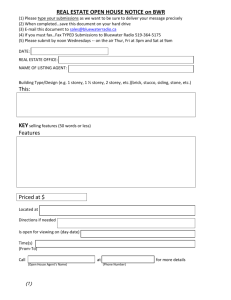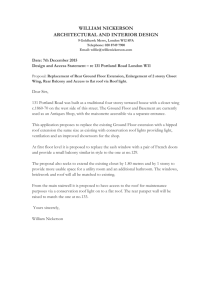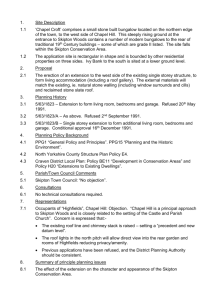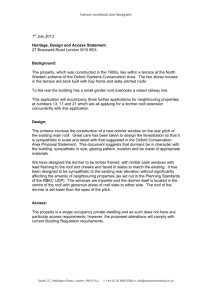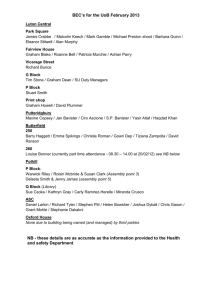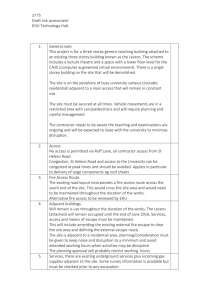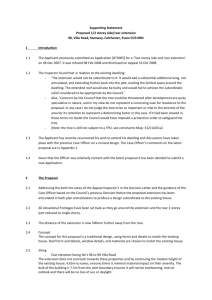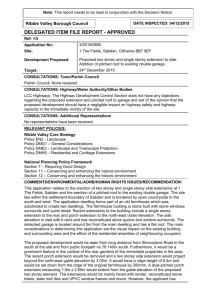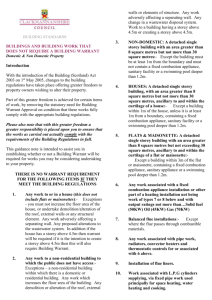400 Archibald Street - City of Thunder Bay
advertisement
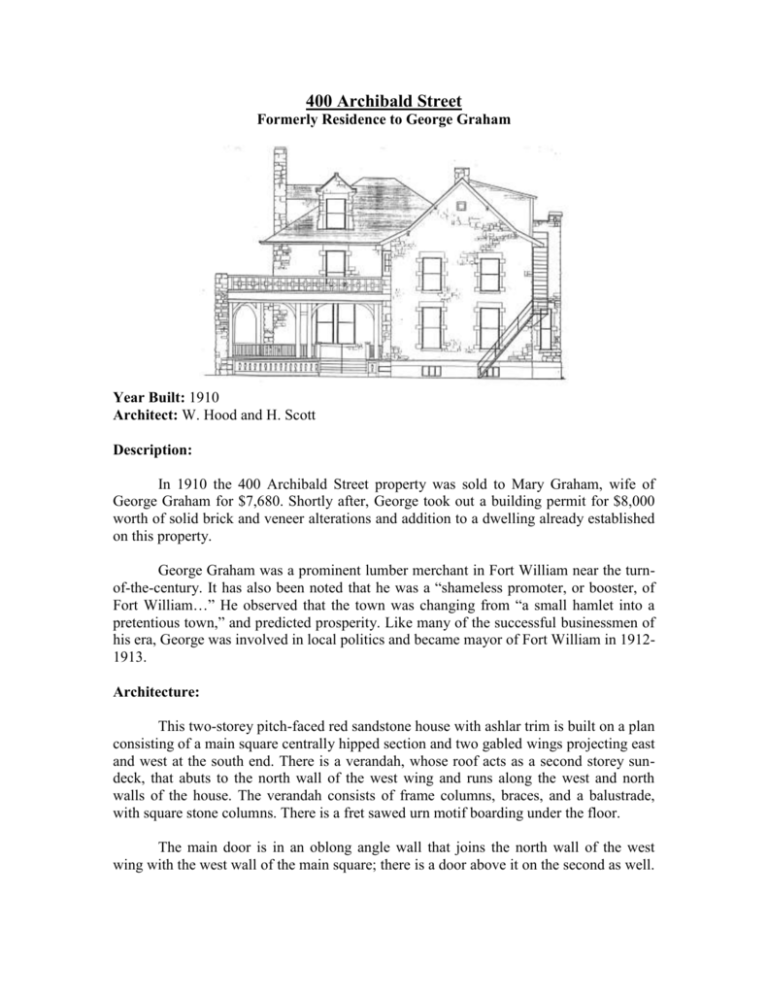
400 Archibald Street Formerly Residence to George Graham Year Built: 1910 Architect: W. Hood and H. Scott Description: In 1910 the 400 Archibald Street property was sold to Mary Graham, wife of George Graham for $7,680. Shortly after, George took out a building permit for $8,000 worth of solid brick and veneer alterations and addition to a dwelling already established on this property. George Graham was a prominent lumber merchant in Fort William near the turnof-the-century. It has also been noted that he was a “shameless promoter, or booster, of Fort William…” He observed that the town was changing from “a small hamlet into a pretentious town,” and predicted prosperity. Like many of the successful businessmen of his era, George was involved in local politics and became mayor of Fort William in 19121913. Architecture: This two-storey pitch-faced red sandstone house with ashlar trim is built on a plan consisting of a main square centrally hipped section and two gabled wings projecting east and west at the south end. There is a verandah, whose roof acts as a second storey sundeck, that abuts to the north wall of the west wing and runs along the west and north walls of the house. The verandah consists of frame columns, braces, and a balustrade, with square stone columns. There is a fret sawed urn motif boarding under the floor. The main door is in an oblong angle wall that joins the north wall of the west wing with the west wall of the main square; there is a door above it on the second as well. The west wall of the main square has a pair of windows on the first and a single on the second. The north wall is irregularly fenestrated: each storey has three large windows and the second in addition has a smaller one. The short wing on the east wall is regularly fenestrated, being two bays wide, and has a first storey door to the north. Its gable has nailheaded purlin-type brackets that rest on corbel stones; the roof has a slight bell cast slope. The rest of the building’s east wall is sparsely fenestrated; there is a corbelled chimney breast at the north end of the second storey. The west wing is longer than the east one, but otherwise, it is identical to the east one except for the minor addition of having a blank ashlar shield under the peak. The rear wall, regularly fenestrated, has a central two bay, two storey bay window topped by a battlement parapet whose central merlon is segmentally arched. There is a small stone, frame and glass enclosed hip roofed porch at the east corner of the rear wall. There is a dormer on each of the north, east and west slopes of the centrally hipped roof; they are all stone faced, and have shale or slate cheeks and “Tudor” parapets. Stretching across almost the full length of the rear wall is an insul-brick flat roofed dormer. There are tall stone chimneys on the north and east slopes of the hipped roof and over the peak of the west wing’s gable. There is also an iron fence around the western portion of the property. William Hood: Helping design St. Paul’s United, Brodie Street Resource Library and St. Andrew’s Presbyterian Church, William Hood was a well known and successful architect of his time. He was first a resident of Fort William, arriving in 1906 or 1907.
